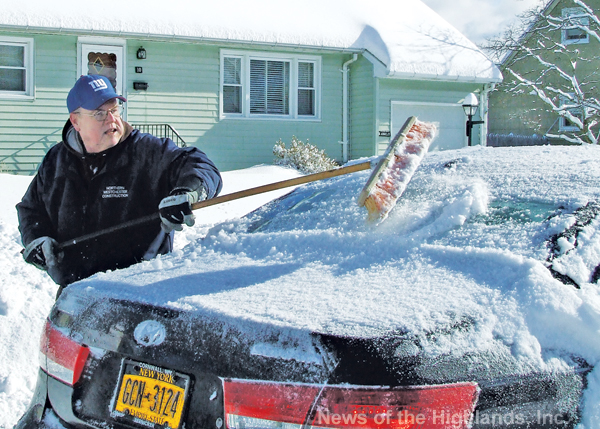

It’s been a rough winter for both the Town of Cornwall and the Village of Cornwall-on-Hudson. Snow storm Pax dumped an estimated 18 to 24 inches last week. That’s on top of the near foot that was already on the ground from the storm a week prior. Both the town Highway Department and the village Department of Public Works have been able to keep up with each storm, but both agencies have gone over budget and exceeded salt tonnage projections.
DPW Superintendent David Halvorsen said salt orders for the following winter must be placed in April.
“So this coming April I have to put my quota in to the state for the state bid,” he said. “I have to give them an estimate of how much we’re going to use.”
Halvorsen ordered 360 tons of salt, which is delivered as needed because the department’s salt shed can only hold about 100-110 tons. The first shipment arrived in September. Halvorsen put in an order for another shipment two weeks ago.
Having salt on hand hasn’t been an issue for the village, but Halvorsen is 60 tons over what he projected last April. Last year he budgeted $25,000 for snow removal, the same for the 2014-15 budget. The new budget year in the village begins March 1, but Halvorsen said he’s already over the current year’s budget.
“Unfortunately we can’t control that,” he said. “We have to be able to keep the roads clear.”
The town’s salt contract runs from September to August. Last year 1,500 tons were ordered. As it stands now, that total has been exceeded by 139 tons.
Despite the snowfall totals for last week’s storm, Halvorsen said he didn’t use as much salt as during a previous storm which only brought a couple inches of snow over a 12-hour period. He said temperature plays a major factor in how much salt is used during a storm.
During the smaller-scaled storm, the temperature was lower, so roads would re-freeze requiring additional applications of salt. Halvorsen said four times the amount of salt was used for that storm than the one last week. A crew began pre-treating roadways around 4 a.m. on Feb. 13, good traction was created so not much salt was needed. The warm temperature prevented the roads from re-freezing.
Halvorsen had a crew of eight work in shifts around the clock through the duration of the storm. He also received assistance from the Water Department, which provided two crews of two men who worked six hour shifts.
Throughout the storm, Halvorsen rotated his road crew, requiring mandatory breaks. With the DPW building open, his men can settle down for a little siesta. They bring food and a change of clothes with them. Halvorsen had pizza and sandwiches to keep his employees energized through the night.
